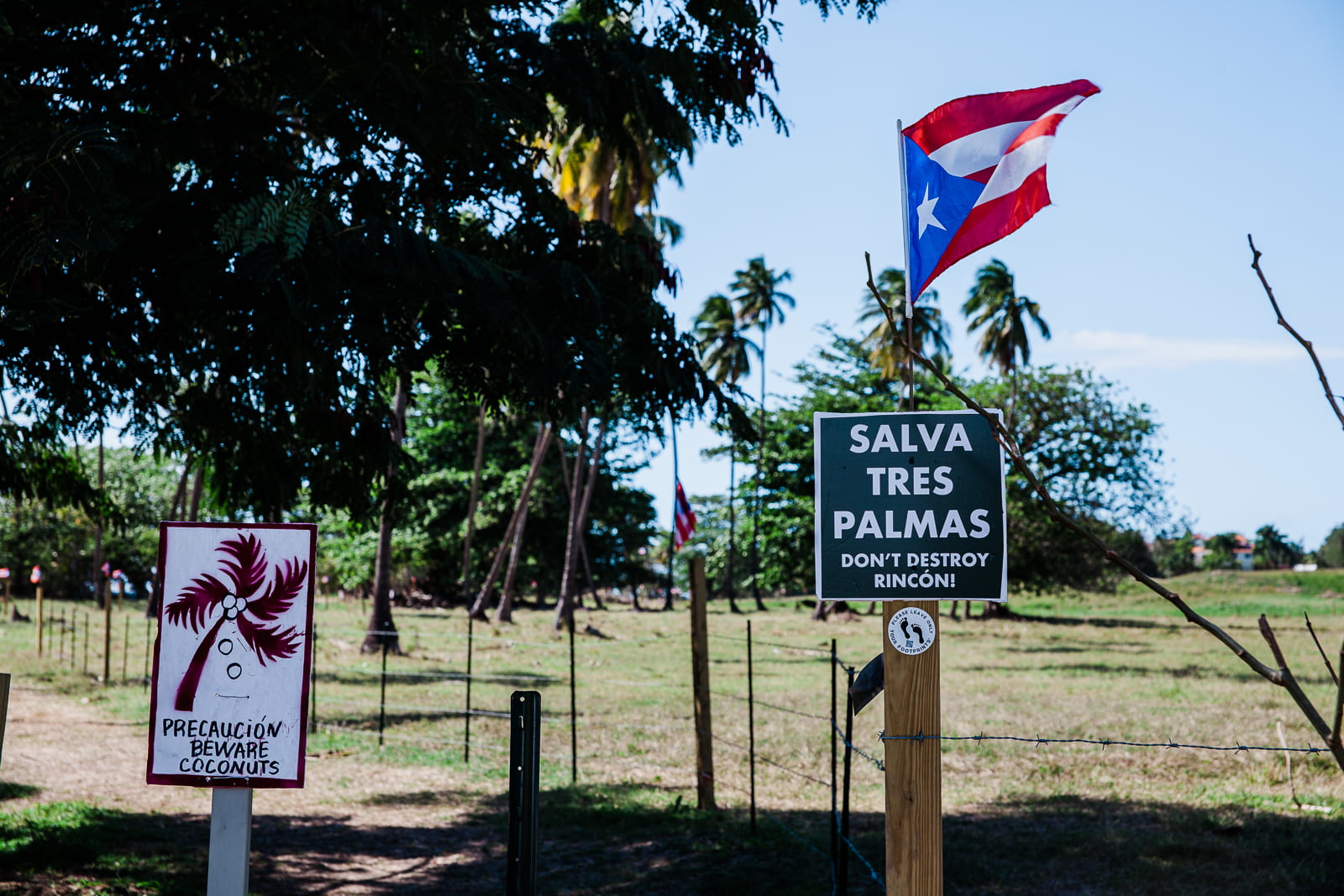
Photo by Sofía Pérez | Entrance of Reserve of Tres Palmas or RMTP, the path walkway leading to the beach was opened after months of fighting against the Casino that would have been build in this area.
By Sofia Pérez
RINCÓN, Puerto Rico ⏤ Cassandra Lopez Fradera, 36, a community activist, writer and resident of Rincón, has been surfing at the “town of beautiful sunsets” for years, and has seen the changes to its shoreline from quiet, laidback surf community to annexed resort territory where wealthy tourists come to relax and spend money.
She, like many who believe their spot on the island is the most beautiful in the world, says Rincón is vulnerable to coastal privatization as the rich move in and try to keep the locals away.
“There is this notion among developers that say, this is my property, my neighborhood, my house, my gate, my beach,” said Lopez, who is from Puerto Rico but grew up in the northeastern U.S. She moved back four years ago. “The truth is that the ocean belongs to none of us, the ocean has no borders, no name,” she said on a sunny Monday afternoon at Maria’s beach, where she was surfing along with many others who were out negotiating the waves.
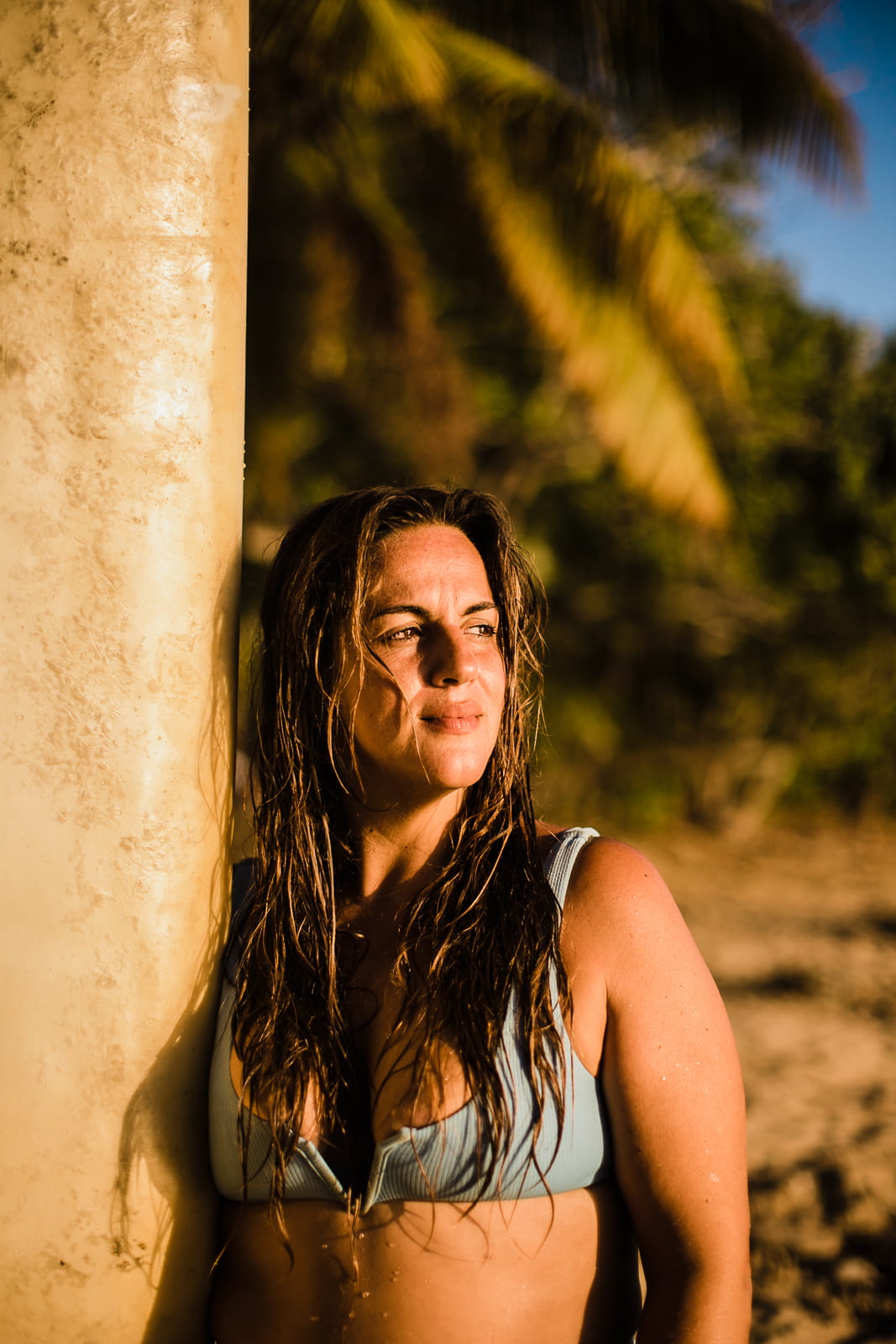
Photo by Sofia Pérez | Cassandra Lopez Fradera, 36, a community activist, writer and resident of Rincón.
A look around at the landscape proved her point. Rincón is slow-paced, warm and calm – and filled with gorgeous beaches. However, a quick stroll around town reveals several new hotels, condominiums and high-priced rental units encroaching on the once-unlimited open space.
The effect: Increasingly in recent years, the public has been denied access to beaches as developers have started to claim certain areas for “private” use. By law, all beaches in Puerto Rico require public access. However, some hotels and apartment buildings have established private-seeming beachfront areas, forcing the public to go through dangerous or tricky paths to get to the water. The result is growing dissent from residents who object to what they say is privatization by wealthy, exclusive real estate developers, even if technically no one can call it that.
“We Puerto Ricans are always protesting,” said Lina V. Pérez, an activist and college student at University of Puerto Rico Mayaguez involved in the efforts against development in Rincón. “We always have to be standing up for what’s going on on the island, because if not, it is going to get taken away.”
The movement against privatization has been focused on preventing the development of hotels and condominiums across the public beaches on the island. The residents who lead the effort – called “Las Playas son del Pueblo” or “The Beaches Belong to the People” – have been focusing on the impact on the natural habitat of sea turtles, coral reefs and birds. They’re also upset about the rising costs of the adjacent housing markets and gentrification.
According to the Puerto Rico Coastal Zone Management Program or PRCZMP, development that blocks access to beaches in Puerto Rico is prohibited. Regulations created in 1979 require developers to retain public accessway to all shores.
Yet there are examples all over the island of barriers to shoreline access.
In Playa Sucia, for example, a natural reserve located in the southwest corner of the island, there is a fight brewing against the development of Columbus Casino Resort and Hotel. “People are trying to get into the middle of the bulldozers since they are trying to ruin the whole place. There’s a wetland element, which is crucial to a lot of the natural endemic sources of an ecosystem,” said Pérez.
And in Isla Verde, a tourist area close to San Juan where massive hotels including the Marriott and Hilton dot the shore, the beaches are taken over during the day by lounge chairs that only paying customers can sit in, thereby rendering those areas unusable by locals.
Nowhere is the effort to control exclusion by developers more advanced than in Rincón, which means “nook” in Spanish and is located in the northwest coastal quadrant of the island, near Aguada and Añasco.
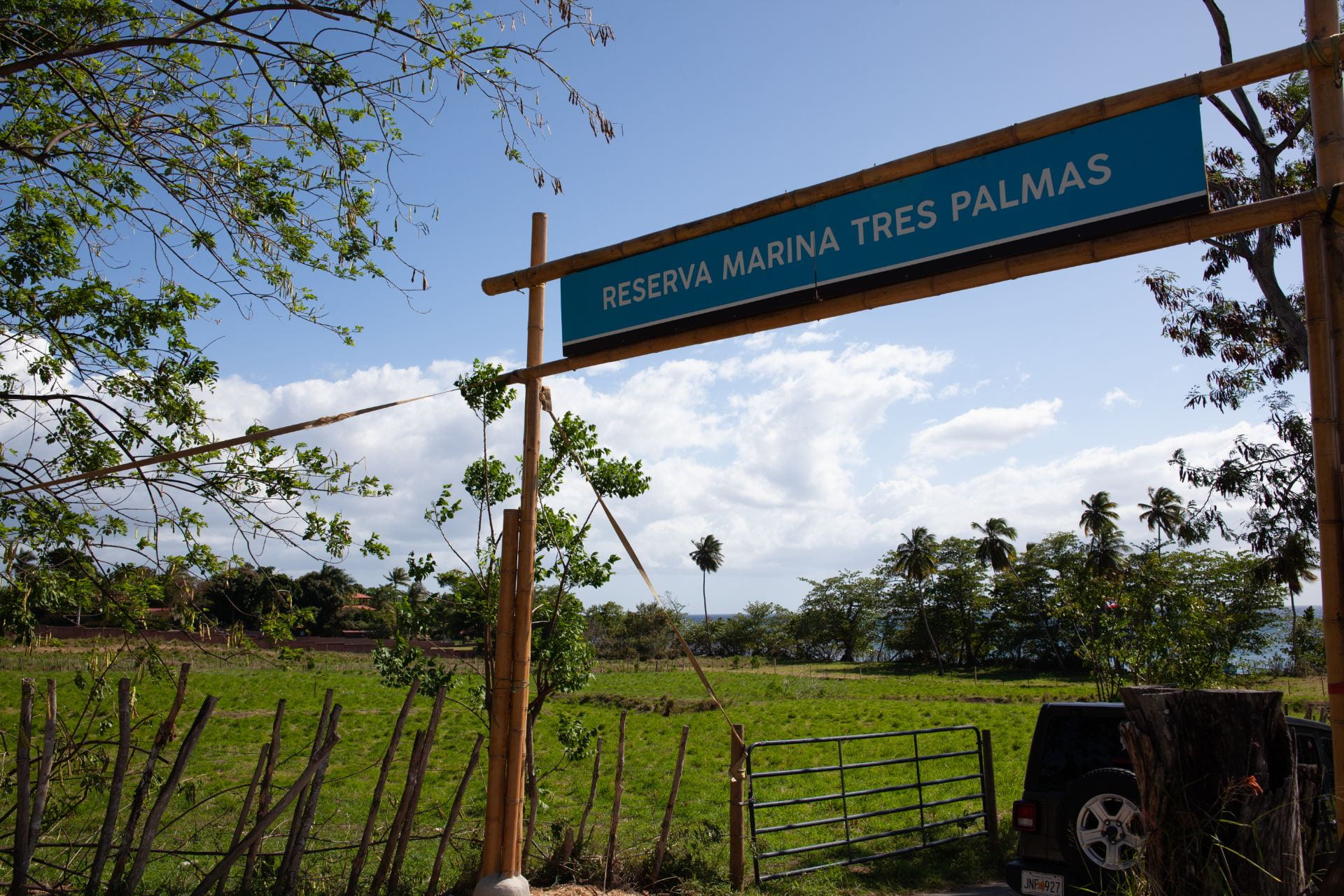
Photo by Elisabeth Hadjis | Marine Reserve of Tres Palmas or RMTP, is the first marine reserve in Puerto Rico, established to preserve the island’s rich marine biodiversity and protect the healthy corals and prime surfing location.
Most recently, Ricón’s famous Marine Reserve of Tres Palmas or RMTP, located by Steps Beach, has been under threat by a new housing development called the Finca Sueño de Aurora construction project. RMPT is the first marine reserve in Puerto Rico, established in January 2004, to preserve the island’s rich marine biodiversity and protect the healthy corals and prime surfing location.
In August 2021, the Environmental Protection Agency demanded that Finca Sueño de Aurora and its partner, Bellagio LLC, comply with the Clean Water Act in its plan to bulldoze protected areas of the RMTP, which would have ultimately led to stormwater discharge flowing to the coastal wetlands and polluting the shore.
“It is imperative that developers get stormwater permit coverage for construction projects and implement erosion and sediment controls to protect communities’ clean water and associated ecosystems,” said the agency’s acting regional administrator, Walter Mugdan, in a press release. “Building without the proper permits and appropriate erosion controls is a violation of the Federal Clean Water Act. EPA is committed to working with developers and contractors so that they can be good stewards for the benefit of the local communities they serve and for Puerto Rico’s coastal waters.”
The release also noted that these companies altered “existing vegetation and excavated the site soil without the required implementation of erosion-contol best management practices.”
Before that, in 2018, Rincón Bluewater LLC proposed a hotel and casino just a quarter mile from Tres Palmas Marine Reserve. As seen on the architecture plan drafted by the architect Alvarez Diaz and Villalón, the 7,000-square-foot casino would have had 206 rooms on 2.82 acres of property in front of the beach, a 4,600-square-foot restaurant, a pool area on its first level, a ballroom and a gym. It was due to be finished by February 2021.
This time it was not the EPA, but the resistance that got involved. As a result, the “No Al Casino” movement was created to fight the development – and won.
“A lot of the resistance work came out of the struggle against the casinos, hotels and the construction of large apartment complexes, all located on the shore,” said Pérez. That project was never built.
Besides the beautiful landscape and obvious draw for tourists, there is another incentive for developers to choose the shores of Puerto Rico to build their hotels and casinos. In 2012, Act 22 was implemented as a way to attract foreign capital in exchange for tax exemptions. Also known as the “Act to Promote the Relocation of Investors to Puerto Rico,” 22 was enacted by the 16th Legislative Assembly of Puerto Rico to promote investment from wealthy individuals in the hopes of supporting the local economy.
Vanessa Uriarte is executive director of the organization Amgxs del M.A.R (Movimiento Ambiental Revolucionario), a group founded in 1995 with the purpose of protecting the environment and natural resources in Puerto Rico and assisting communities with tools and resources to resist privatization efforts in their communities.
Uriarte outlined how influencers and celebrities like boxer and social media megastar “Jake Paul are moving to Puerto Rico, buying homes and wanting to live in front of the beach without paying taxes. We are in one of the worst economic recessions we have seen due to the fiscal condition and the debt we have.” She said this is adding to the desire by some islanders to seek money from wealthy investors into the island’s economic stream. But this is at the expense of the locals and natural resources that are bringing investors to the island in the first place.
Today, the “Beaches Belong to The People” movement is active in Rincón on the western shore, Ocean Park in San Juan, Dorado Beach 15 miles northwest of San Juan, Santa Isabel in the south, Luquillo, which is northeast of San Juan, and on the small archipelago islands of Vieques and Culebras.
Their efforts are gaining attention, and ground.
In January, local residents in Ocean Park Beach in Condado, San Juan, held a protest to send a message to tourists and developers against privatization after a video went viral of an American couple harassing local people for setting up a tennis court on the public beach at Ocean Park.
In February, local Puerto Ricans took over Dorado Beach to protest the public’s lack of access since developers started claiming certain areas for “private” use. And more efforts are in the works, say organizers.
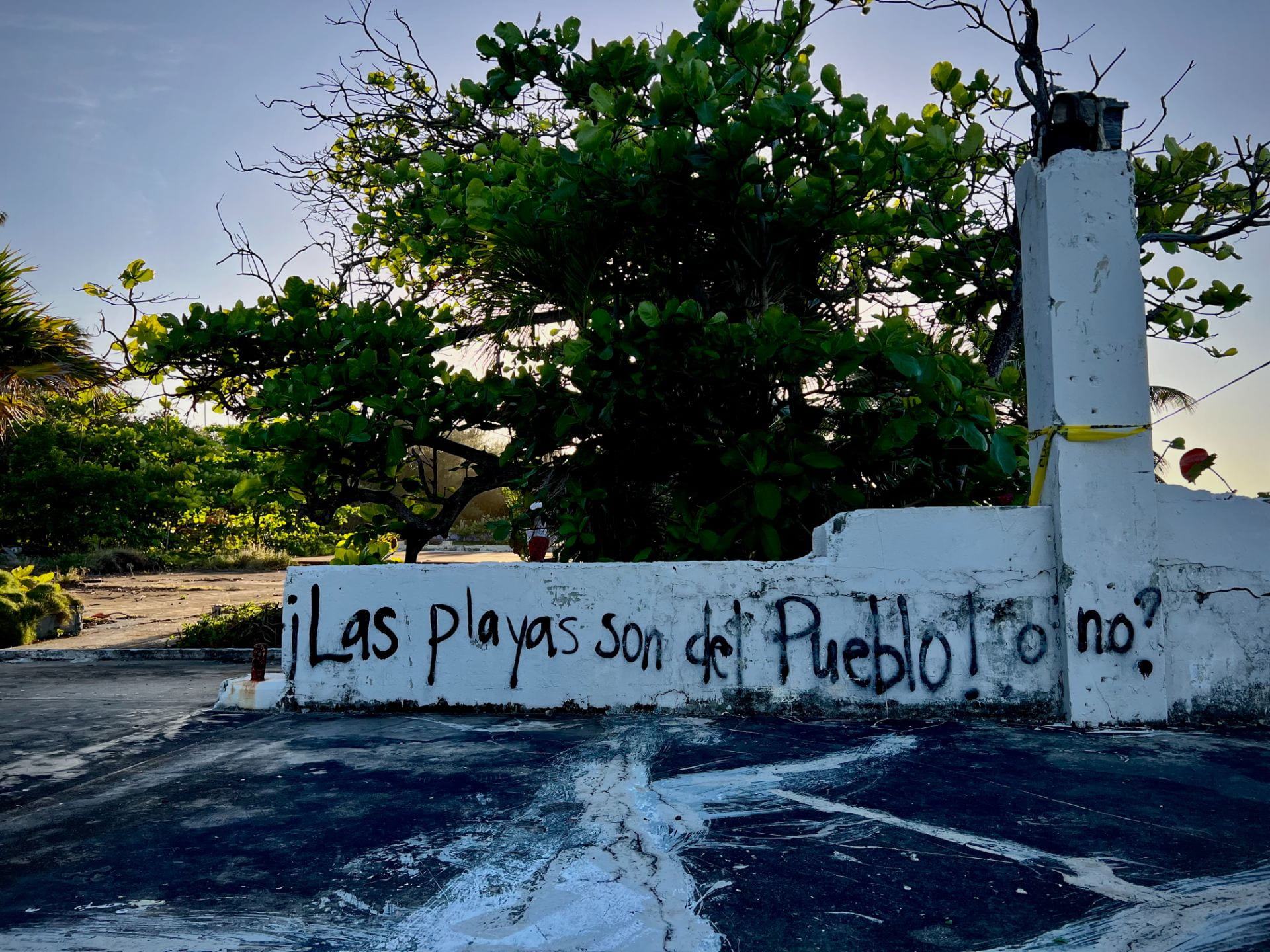
Photo by Sofia Pérez | Graffiti scrawled on a park entrance in Condado: “The beaches belong to the people, or not?”
“There are 78 municipalities in Puerto Rico. Out of those, 44 are municipalities located by a coast, and we are convinced that in all those 44 municipalities, these efforts of privatization are happening,” said Uriarte. “So this is not something exclusively happening in one place. This resistance is happening all over.”
The strategy, she said, is to unite all the efforts in the hopes that many protests will lead to rapid and universal change. “It is much easier for your neighbor to be the one to support you, than for us to have to run to the other side of the island because unfortunately these communities become aware of a development project when the machinery is already in place,” she said.
For Lopez, it is clear the island is rich in resources and has attracted the attention of mainland U.S. citizens with money to spare but with no stake in preserving what’s already there. “I feel we’re in this hidden imperialist relationship because we were given citizenship, so at times that disconnects us from solidarity with other nations in Latin America,” she said. “But the reality is that the Spanish took so much of the gold, copper, water from the center of the islands, the bamboo and the ocean – they took these huge resources.”
There is no way, she said, the residents are going to allow others to take control of the beaches, too.
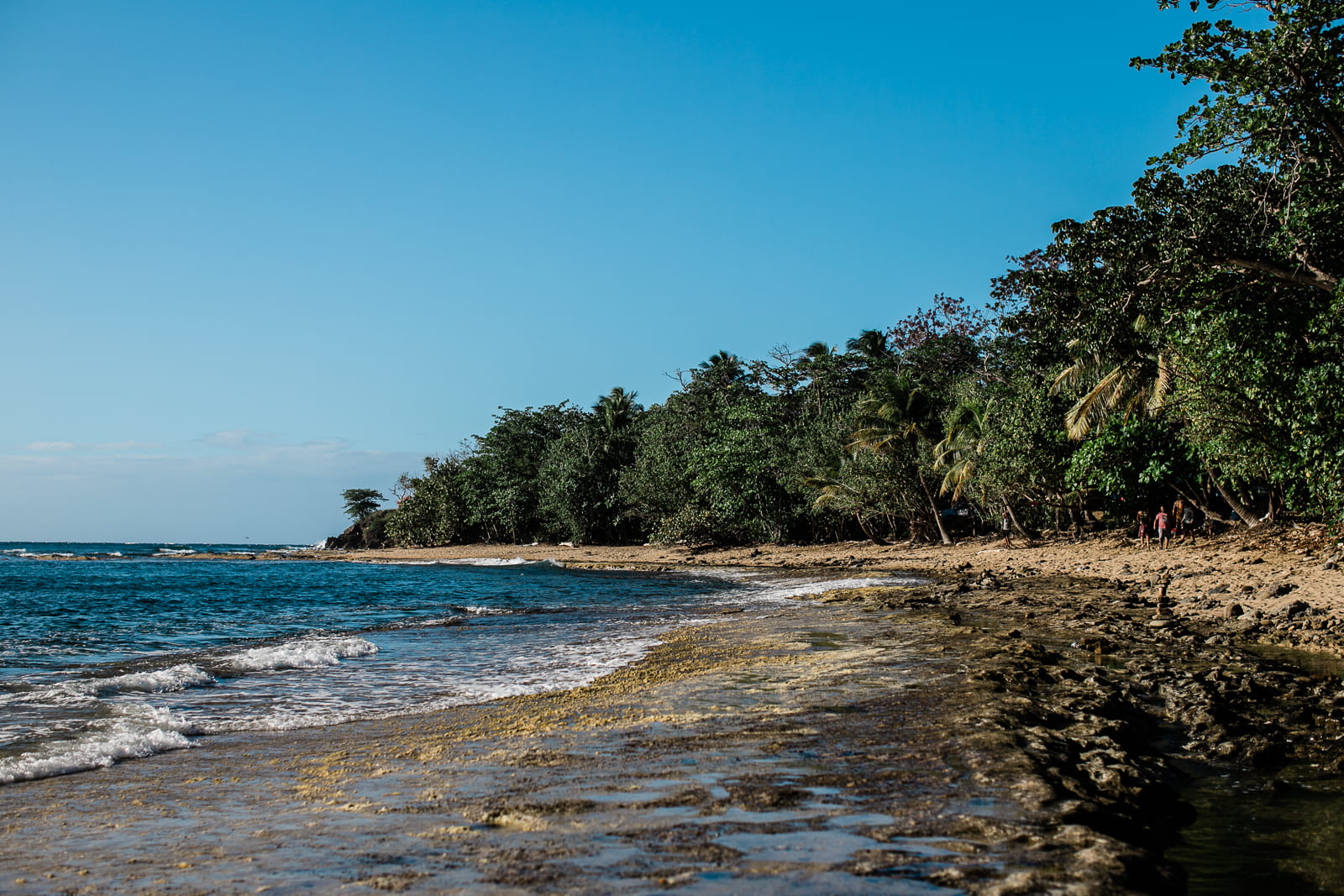
Photo by Sofia Pérez | The beaches of Rincón, considered among the most beautiful in the world, are under threat by developers who want to capitalize on their majesty.